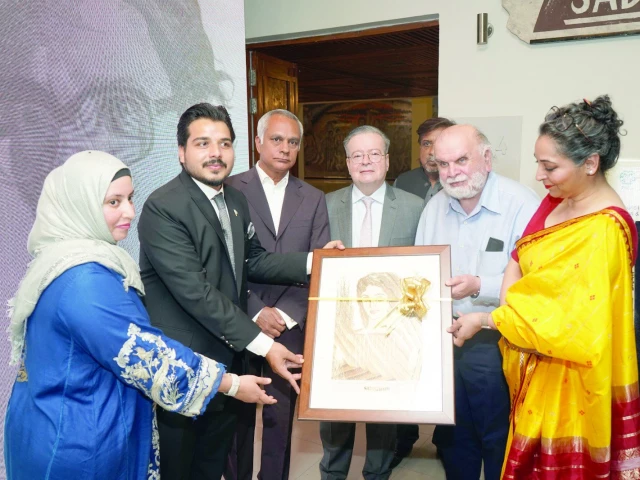- Guardiola delighted with Marmoush contribution Manchester City FC
- Pep Guardiola explains thought process behind Omar Marmoush and Manchester City starting place OneFootball
- ‘Need both’ – Pep Guardiola gives Omar Marmoush verdict after Man City…
Author: admin
-
Guardiola delighted with Marmoush contribution – Manchester City FC
-

Tech giants are spending big on AI in a bid to dominate the boom
The titans of the technology sector are ramping up their spending on artificial intelligence, as they rush to reap the benefits of an AI boom that has pushed stocks to record highs.
Earnings reports from Meta, Alphabet and Microsoft on Wednesday reaffirmed the colossal amounts of money these firms are shelling out for everything from data centres to chips, even as questions swirl about returns on the investments.
Meta said its capital expenditures for 2025 will be between $70bn (£53bn) to $72bn, up from an earlier estimate of $66bn to $72bn.
Its spending growth in 2026 is poised to be “notably larger” than this year, the company said. Meta is seeking to compete with companies like OpenAI.
On a call with analysts, Meta boss Mark Zuckerberg defended the firm’s investments, saying he saw big opportunities ahead driven by AI, both in terms of new products and for honing its current business selling ads and feeding people content.
“The right thing to do is accelerate this,” he said, adding later: “We are sort of perennially operating the family of apps and ads business in a compute-starved state at this point.”
Google and YouTube owner Alphabet similarly raised its forecast for this year to $91bn to $93bn, up from an earlier outlook of $85bn in the summer, in the latest sign of its increasingly lofty spending goals,
That estimate is nearly double the capital expenditures that the company reported for 2024.
Microsoft’s capital expenditures in the quarter through to 30 September, including on data centres, totalled $34.9bn, the company reported on Wednesday – a larger spending figure than analysts had expected, and up from $24 billion in the previous quarter.
“We continue to increase our investments in AI across both capital and talent to meet the massive opportunity ahead,” Satya Nadella, Microsoft’s chief executive, said.
Azure, the firm’s cloud computing unit, and Microsoft’s other AI products have a “real-world impact”, Mr Nadella said.
Exuberance among investors about massive AI spending has helped all three tech firms outperform the broader S&P 500 index.
But Wall Street is also focused on whether these firms’ investments are starting to yield tangible returns.
The two things holding up the US economy in the last several months have been consumers and AI-related business investments, said Aditya Bhave, senior US economist at Bank of America.
“To the extent that the latter remains strong, it’s a bullish signal for GDP growth,” he said.
Continue Reading
-
“Natural Experiment” Reveals Lifelong Cardiac Benefits of Early Sugar Limits – SciTechDaily
- “Natural Experiment” Reveals Lifelong Cardiac Benefits of Early Sugar Limits SciTechDaily
- What Britain’s post-war sugar rationing teaches us about long-term heart health News-Medical
- Reducing Sugar Intake in Childhood May Reduce…
Continue Reading
-

Sadequain’s ‘The Stranger’ unveiled at PNCA
.
Ambassador of France to Pakistan Nicolas Galey receives a framed lithograph of The Stranger by Sadequain during the exhibition’s opening at the Pakistan National Council of the Arts, Islamabad. Photo: EXPRESS
…Continue Reading
-

MPs raise concerns over Prince Andrew’s Royal Lodge lease
 Shutterstock
ShutterstockPrince Andrew has lived at Royal Lodge since 2004 and has a 75-year lease Parliament’s spending watchdog has raised concerns over whether Prince Andrew’s lease arrangements are “achieving the best value for money”, amid increased…
Continue Reading
-

‘Unprecedented’ view of the sun reveals elusive coronal waves after 85-year search
A hot mystery on the sun may be close to being solved.
For decades, scientists have been trying to understand why the sun‘s outer atmosphere is so much hotter than its surface, despite being farther from the core. Whereas the surface, or…
Continue Reading
-

Secondary Infections and Long COVID in Kids: What Pediatricians Need to Know | The Transmission
Medscape When Lucas Denault was first infected with COVID in January 2021 at the age of 15, his symptoms were relatively mild. A high school athlete at the time, the Pennsylvania resident experienced a brief bout of cold-like symptoms,…
Continue Reading
-

RuneScape Dev Really, Really Wants Its Players to Vote in Favor of Removing the Game’s Least Popular Microtransactions
RuneScape developer Jagex is considering removing one of the game’s least popular, yet most pervasive, layers of microtransactions. But instead of just making the decision itself, it’s letting its entire playerbase vote on whether or not to ditch…
Continue Reading
-
PCAOB Welcomes Global Partners to 17th International Institute on Audit Regulation
The Public Company Accounting Oversight Board (PCAOB) today concluded its two-day 2025 International Institute on Audit Regulation, in Washington, DC. Established by the PCAOB in 2007, the event offers regulators from around the world a chance to discuss issues related to auditor oversight, audit quality, and investor protection. Attending the Institute this year were officials from audit regulators in 33 non-U.S. jurisdictions, as well as officials from several international organizations.
“The PCAOB’s International Institute provides a platform to exchange ideas and insights among audit regulators around the world to advance audit quality. It is also a vital forum for building and maintaining constructive relationships that enable audit oversight cooperation for the benefit of investors in U.S. capital markets,” said PCAOB Acting Chair George R. Botic.
Under the theme of “A Firm’s System of Quality Control: The Foundation of Audit Quality,” the Institute included sessions with PCAOB Board Members and staff, leaders from non-U.S. regulatory bodies, and representatives from key stakeholder groups across auditing and financial reporting. Panel discussions covered topics such as emerging opportunities and challenges in audit oversight, technology and audit regulation, the intersection of private equity investment, audits, and audit regulation, and the latest insights from PCAOB inspections.
Keynote sessions included remarks from James H. Freis, Jr., the founder of Market Integrity Solutions, and Dr. Maria Borysoff, Assistant Professor of Accounting at George Mason University.
“The annual International Institute gives us the opportunity to discuss current audit matters with other audit regulators, deepen our understanding and cooperation with each other, and better protect investors around the world,” said Karen B. Dietrich, Director of the PCAOB’s Office of International Affairs.
Learn more about the PCAOB’s international work on our website.
*****
About the PCAOB
The PCAOB is a nonprofit corporation established by Congress to oversee the audits of public companies in order to protect investors and further the public interest in the preparation of informative, accurate, and independent audit reports. The PCAOB also oversees the audits of brokers and dealers registered with the Securities and Exchange Commission, including compliance reports filed pursuant to federal securities laws.
Continue Reading
-

‘Keep Android Open’ movement fights Google dev requirement • The Register
Starting next year, Google plans to require all apps installed on certified Android devices, including sideloading, to come from developers it has verified. Many Android developers see the move as a power grab and have started a movement to…
Continue Reading